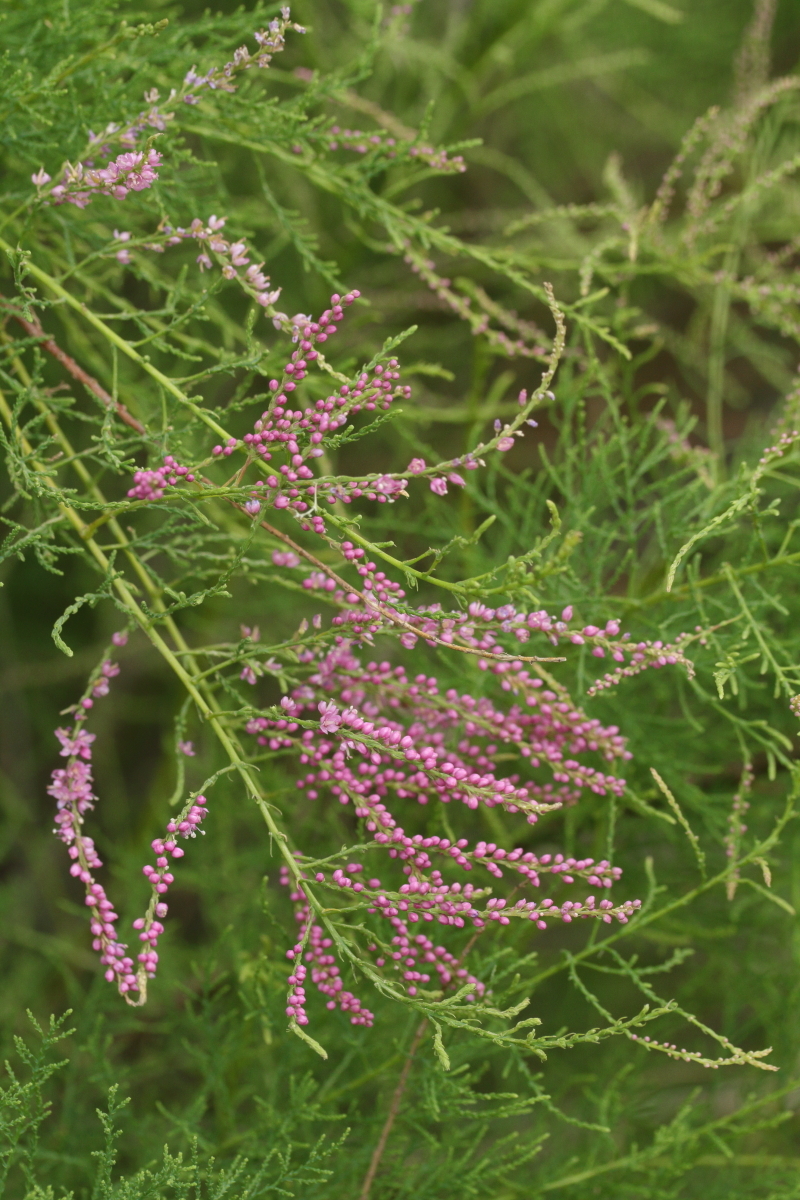Tamaricaceae
Shrubs or trees. Leaves alternate. Inflorescence a simple or branched, spike-like raceme, a spike, or flowers solitary. Flowers small, subtended by a leaf-like or membranous bract (rarely 2 or 3 bracts); sepals 4 or 5, free; petals as many as sepals, free, caducous or persistent until fruit ripens; stamens as many as petals and opposite them (in Victoria) or up to twice as many as petals, inserted at the margin of, or below a (usually) lobed, cup-like nectary disc, anthers opening via longitudinal slits; ovary superior, 3(–5)-carpellate, 1-locular, stigma 3(–5)-lobed; ovules few–many. Fruit a loculicidal capsule; seeds often with an apical tuft of hairs.
4 genera and c. 120 species, mainly in Europe, Asia and Africa; 1 genus naturalised in Australia.
Walsh, N.G. (1996). Tamaricaceae. In: Walsh, N.G.; Entwisle, T.J., Flora of Victoria Vol. 3, Dicotyledons Winteraceae to Myrtaceae, pp. 371–372. Inkata Press, Melbourne.
 Spinning
Spinning


